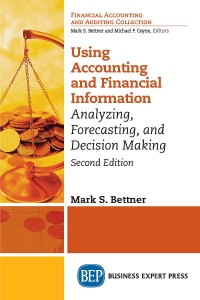Help me answer just question number 4


HIGH POINT AVIATION: OPERATING BREAKEVENS George and Grace Cox had aviation in their blood. They had both learned to fly in their teens and from that moment on had wanted to do nothing else but be around planes, in the air, and spending their days with others who shared their passion. Even though they were still fairly young (in their midtwenties), they had made three major decisions: to get married, to start a small flight charter company, and to serve the mining, oil, scientific, and wilderness adventure clients of northern Canada. After having wrestled with these decisions for what seemed like years, a sweet feeling of relief and excitement settled in. They had a direction. They were in agreement. They could not wait. Late one night after George had been asleep for a couple of hours, Grace finally gave up sleep was not in the cards for her that night. Ever the more practical of the two and the more financially concerned, she had a host of financial data rumbling around in her thoughts. The combination of a visit to their banker that morning and the tacos from Sid's Canadian Grill that evening were working in tandem to keep her awake. She knew her indigestion would pass, but she couldn't shake the feeling that their thin financial base necessitated a sizeable scale of flight operations during their first year. If a substantial revenue stream was slow to develop, or expenses were too high, their first year might be their last yearthey had no financial slack. The fundamental question she wanted to get a handle on was, given their preliminary budget figures for the coming year, what level of revenue-generating flight miles did they need to just break even? Anything above that would be icing on the proverbial cake. The Financial Bet As Grace listened to George softly snoring in the bedroom, she quietly made her way to the kitchen table, where the pile of papers comprising their legal, regulatory, and financial business details were neatly arranged. Somehow though, the orderliness of the papers belied the uncertainty of whether they could make the business financially viable. She had done her homework. She had compiled a basic budget, assuming 1,600 flight hours as merely a starting point, and classified all the expenses in it as either variable or fixed (Exhibit 1). In short, she had determined that annual fixed costs were going to be about $840,000 (including salaries and depreciation on two Twin Otter planes and a small hangar). She estimated total variable operating costs would be close to $6.00 per flight mile. Because Grace and George anticipated setting their fee structure based on flight miles, she wanted to ascertain the baseline breakeven level of flight miles they needed to fly. With the basic data she had crafted, it was not too difficult to derive 280,000 flight miles as their needed breakeven level. As merely a starting point, she had assumed a reasonable revenue rate, no matter the number of passengers on board, of $9.00 per flight mile. Clearly, that rate could be changed. Her basic calculation was as follows: Assumed base case data of: FC = annual fixed costs of $840,000 VC = variable costs of $6.00/flight mile RR = revenue rate of $9.00/flight mile Breakeven calculation: $FC = ($RR/flight mile $VC/flight mile) = breakeven annual flight miles $840,000 = ($9.00 - $6.00) = 280,000 flight miles The 280,000 breakeven flight miles figure seemed high but doable. In her mind, she also translated that figure into an approximate number of flight hours, determining that figure to be about 933 hours per year for each of the Twin Otters.' They would be pushing the planes pretty hard, especially for the northern Canadian environment, but she felt fairly certain the transportation demand would materialize that would require them to do it. What If? It was hard to tell if the warm glow Grace was beginning to feel was due to the hot chocolate and her flannel pajamas or an optimism that bordered on overconfidence. Just to be on the safe side (if there was such a financial concept) she jotted down a few what ifs she wanted to explore. In particular: 1. If High Point were to decrease its $9.00 revenue rate by 5%, what would the new level of breakeven flight miles be? 2. If High Point were to incur another $100,000 of fixed costs, what additional flight miles would need to be flown at the $9.00 flight-mile revenue rate to keep the company at a financial breakeven level? 3. If High Point could renegotiate its fuel contract and thus decrease variable costs per flight mile by 8% (to $5.52), how much could flight miles decrease and the operation remain at a breakeven level (assuming all the other base case financial facts did not change)? 4. If High Point's actual flight miles were 12% below the base case breakeven level of 280,000 flight miles, what fixed cost reduction would be required to keep the operation at a financial breakeven level? 5. If the company landed three new contract clients, thereby increasing projected flight miles by 20%, above the 280,000 base case level, to what level could variable costs (VC) rise and the operation remain at a financial breakeven level









